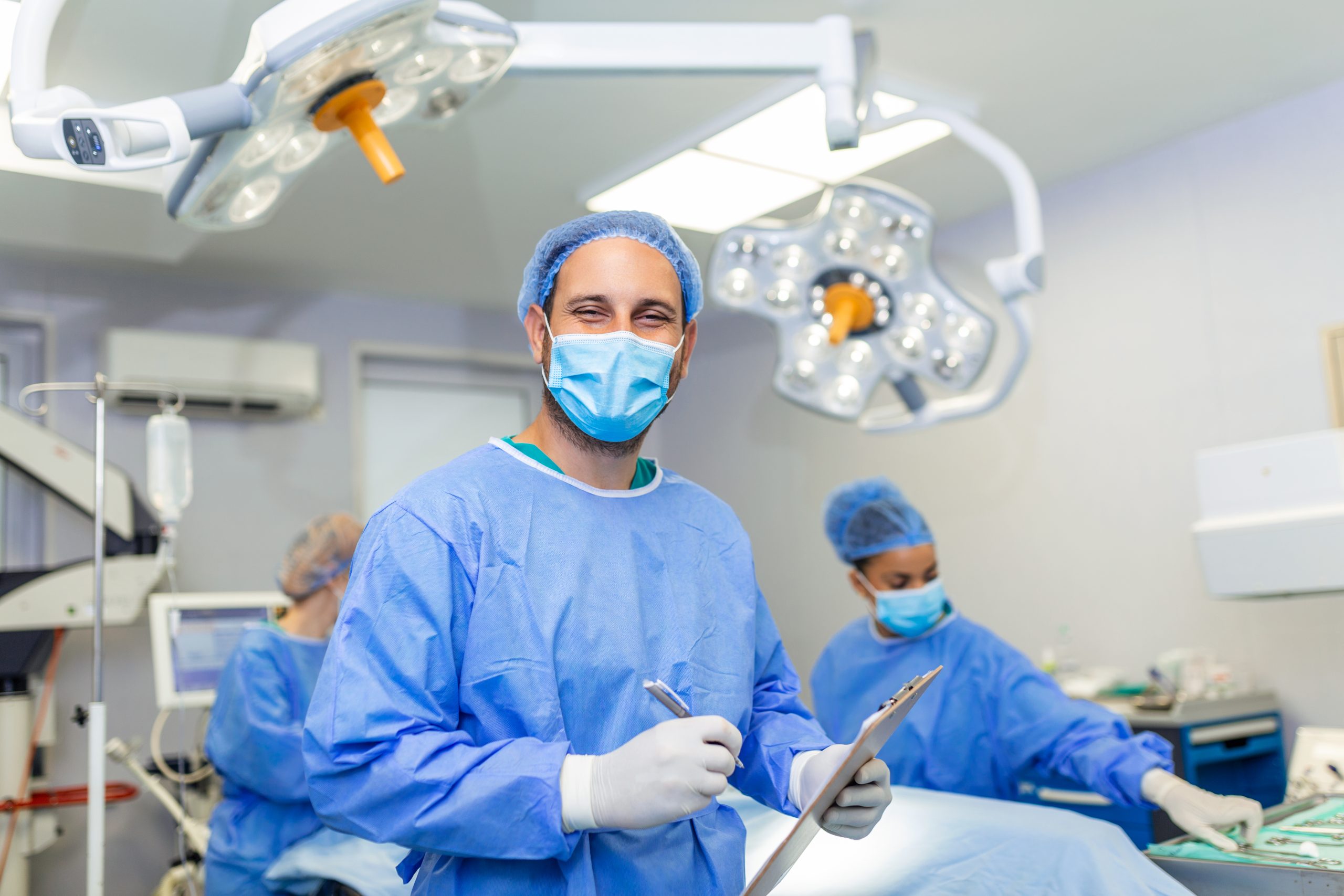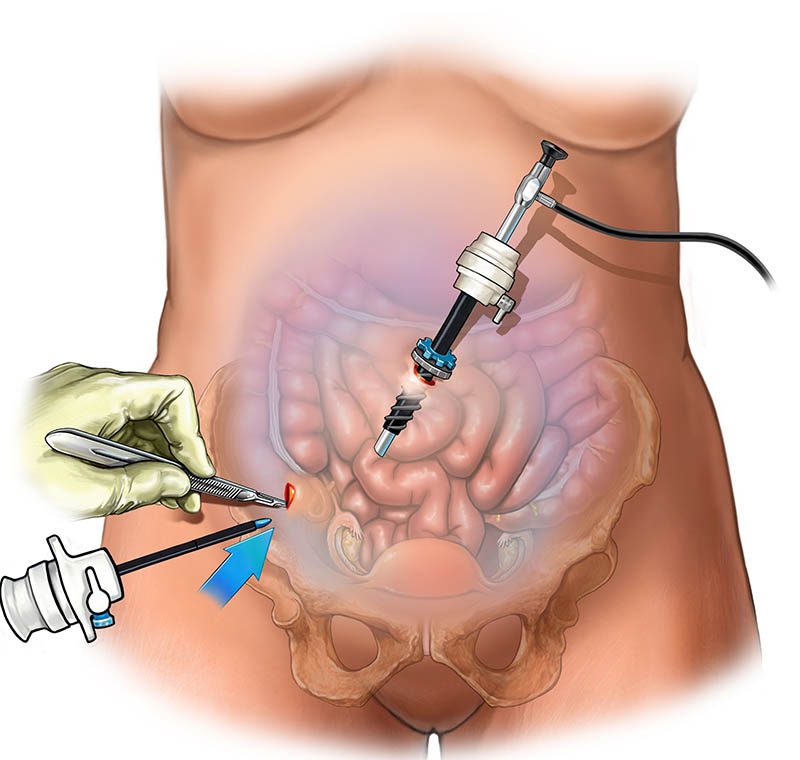Surgikure is a specialized laparoscopy treatment center that also takes pride in putting patients as a priority besides offering medical technology. A laparoscopy guide will help you understand what it is, how it is performed, and what you can expect post-surgery, including benefits and risks, as well as general information about the healing process.
This guide will show you both the potential benefits and risks of laparoscopy and provide you with useful tips for each step so you can make an informed choice. No matter if you are planning to undergo an operation or think about it, our goal is to make it as convenient and caring as possible.
What is laparoscopy?
Laparoscopy, sometimes referred to as “keyhole surgery,” is a kind of surgery where doctors perform procedures on internal organs while making Small incisions. This works through the application of a thin flexible tube with a camera and light referred to as a laparoscope to have an inside look at the body. Many operations have their advantages when it comes to benefits such as quick recovery time and few risks whenever surgery is carried out using minimally invasive procedures.


Common uses include:
- Pneumonia and abdominal or pelvic pain
- Treatment of conditions such as appendicitis, hernias, Tubectomy, Hysterectomy, Gallbladder stones and endometriosis offers patients a minimally invasive alternative to traditional surgery.
As for treatment, Surgikure offers the field of laparoscopy treatment, providing not only new medical technologies but a different approach towards the patient. This ultimate laparoscopy guide will explain what laparoscopy is, how it works, what to expect, the benefits of laparoscopy, and the risks of the procedure, as well as recovery time and stitches healing time.
Follow this guide through every step of the laparoscopy process and gain all the necessary knowledge to make the right choice. Whether you are going for a surgical procedure or thinking about it, our approach is to make the process as convenient and comforting as possible.
How is the laparoscopy treatment done?
- Preparation: During the surgery, you will be given anesthesia to minimize the chances of feeling any pain throughout the procedure. It is performed by making an incision a little.
below your navel, through which the laparoscope, a tube containing a camera, is passed.
- Operation: When performing laparoscopy, the doctor uses a small camera to see inside the patient’s body. Surgery can take anywhere between half an hour and a few hours at most, depending on what needs to be performed.
- Closing Incisions: After the operation, the instruments are taken away, and in case of necessity, cut edges are sown or stuck together.
How Laparoscopic treatment is beneficial
Patients opt for laparoscopy due to its wide range of benefits compared to open surgery, including:
- Minimal scarring: These few incisions cause little or no scar to be observed.
- Reduced pain: After surgery, laparoscopy is typically associated with less pain.
- Faster recovery: Patients are usually up and about within days, rather than weeks, of the procedure.
- Short hospital stay: Conventional intra-abdominal procedures often involve less hospitalization and may be done as inpatient surgeries.
At Surgikure, we will ensure that we enhance all these advantages, and to the clients, we will ensure that we offer personal treatment and solicitude through all the stages of the process.
Risks and Considerations
While laparoscopy is considered a low-risk procedure, there are some potential complications to be aware of, which include:
- Hemorrhage in the operation areas
- Injury to internal organs
- Post-surgery conditions associated with anesthetic use
At Surgikure, patient safety is of paramount importance, and we take many precautions to reduce risks. Before being allowed to undergo this procedure, our experienced surgeons will have to determine your medical suitability for it.
What to expect during recovery
Laparoscopy is characterized by fast recovery as compared to other conventional types of operations. But, of course, no two patients are the same. Here’s what you can expect in the days following your procedure:
- First 24 hours: Some patients may feel gas used to make the abdomen expand during the surgery as a cause of mild discomfort, bloating, or shoulder pain. You can probably leave the hospital on the same day for the procedure.
- 1-2 weeks: Mild discomfort is expected to occur in most patients; patients should be told that moderate activity and speaking can be resumed after one week, but heavy exercise and lifting objects should be avoided.
- Full recovery: Healing fully is normally a matter of 4-6 weeks depending on the procedures done and your general wellbeing.
At Surgikure, some of the instructions that we give to our patients include the following, post-operational instructions.


How long will the healing process of stitches take?
Laparoscopy procedures tend to be absorbed naturally within about seven to ten days. However, a few days following surgery, your doctor might need to remove internal stitches. Such a wound may become chronically infected due to contamination or improper wound care, particularly if the wound sites are exposed to water or pollution.
Case Study 1: Surgery for Endometriosis at Surgikure
A 32-year-old woman had chronic pelvic pain for more than one year. Like many women, she was seen by multiple doctors before being correctly diagnosed with endometriosis. Dissatisfied with medical treatment, this woman contacted Surgikure and decided to remove endometrial tissue through laparoscopic surgery. This process took not more than two hours, she was discharged and went home. After two weeks, the woman’s state of pain had drastically improved and was able to go on with her daily life. The key advantage of the particular surgery was its minimally invasive approach, hence, the recovery was quick and there was little scarring.
Lastly, laparoscopic surgery is widely used today as compared to less invasive procedures, with shorter hospital stays, and fewer complication risks associated with the procedure. Surgikure focuses on laparoscopy treatment to provide the best to its patients and, with technological aid, the best treatment possible. Regardless of whether you are to be taken through a diagnostic laparoscopy or a more major surgery, we have your back.
This guide aims to inform the public of the details of laparoscopy, with details on how the process is conducted and what to expect during recovery. If you are looking for some advice on laparoscopic surgery, or if you are thinking about such an operation, feel free to contact Surgikure. What we want is for your surgical experience to be as easy and burden-free as it can be.
FAQs
Q: Is laparoscopy safe?
A: Yes, laparoscopy is a safe process in most cases, and at the same time it is less invasive. At Surgikure, certain policies and procedures are adopted to safeguard the lives of the patients at all times.
Q: How many days am I likely to spend in the hospital after laparoscopy?
A: Laparoscopy is a minimally invasive procedure, you’ll still need to stay in the hospital for at least 2 days to ensure that you recover properly.
However, in some complex cases, your doctor might recommend staying for some 3-4 days so that they can monitor your recovery closely and ensure everything is healing as expected.
Q: But do patients feel pain after the surgery?
A: Sometimes only a slight pain or discomfort is felt, and this can easily be eliminated by the use of painkiller or any other minor medicine. Anyone with chronic or acute pains must consult with their doctor.
